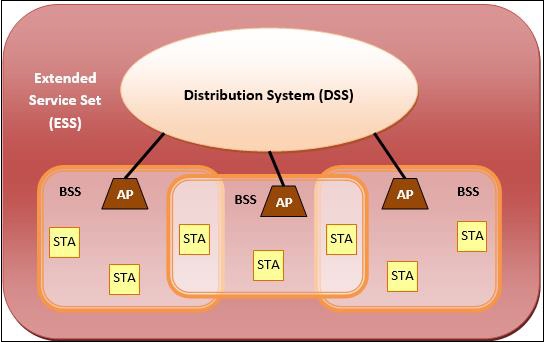IEEE 802.11 and Wireless LAN
Definition - What does IEEE 802.11 mean?
IEEE 802.11 is part of the IEEE 802 set of LAN protocols, and specifies the set of media access control (MAC) and physical layer (PHY) protocols for implementing wireless local area network (WLAN) Wi-Fi computer communication in various frequencies, including but not limited to 2.4 GHz, 5 GHz, and 60 GHz frequency bands.
They are the world's most widely used wireless computer networking standards, used in most home and office networks to allow laptops, printers, and smartphones to talk to each other and access the Internet without connecting wires. They are created and maintained by the Institute of Electrical and Electronics Engineers (IEEE) LANMAN Standards Committee (IEEE 802). The base version of the standard was released in 1997, and has had subsequent amendments. The standard and amendments provide the basis for wireless network products using the Wi-Fi brand. While each amendment is officially revoked when it is incorporated in the latest version of the standard, the corporate world tends to market to the revisions because they concisely denote capabilities of their products. As a result, in the marketplace, each revision tends to become its own standard.
IEEE 802.11 Architecture
The components of an IEEE 802.11 architecture are as follows
1) Stations (STA) − Stations comprise all devices and equipments that are connected to the wireless LAN. A station can be of two types:
- Wireless Access Pointz (WAP) − WAPs or simply access points (AP) are generally wireless routers that form the base stations or access.
- Client. − Clients are workstations, computers, laptops, printers, smartphones, etc.
Each station has a wireless network interface controller.
2) Basic Service Set (BSS) −A basic service set is a group of stations communicating at physical layer level. BSS can be of two categories depending upon mode of operation:
- Infrastructure BSS − Here, the devices communicate with other devices through access points.
- Independent BSS − Here, the devices communicate in peer-to-peer basis in an ad hoc manner.
3) Extended Service Set (ESS) − It is a set of all connected BSS.
4) Distribution System (DS) − It connects access points in ESS.

Advantages of WLANs
- They provide clutter free homes, offices and other networked places.
- The LANs are scalable in nature, i.e. devices may be added or removed from the network at a greater ease than wired LANs.
- The system is portable within the network coverage and access to the network is not bounded by the length of the cables.
- Installation and setup is much easier than wired counterparts.
- The equipment and setup costs are reduced.
Disadvantages of WLANs
- Since radio waves are used for communications, the signals are noisier with more interference from nearby systems.
- Greater care is needed for encrypting information. Also, they are more prone to errors. So, they require greater bandwidth than the wired LANs.
- WLANs are slower than wired LANs.
Explain wireless LAN
- IEEE 802.11
- Data broadcasting
- MAC issues
- BluetoothTechnology
- Routing and various Routing algorithm
- wireless LAN
- Mobile agents in mobile computing
- TCP over wireless
- Issuse in Mobile computing
- Handoff or Handover
- Wireless Telephony:object,feature and application
- IP packet delivery
- Application of wireless communicaion

If you have any doubts. Please let me know ConversionConversion EmoticonEmoticon